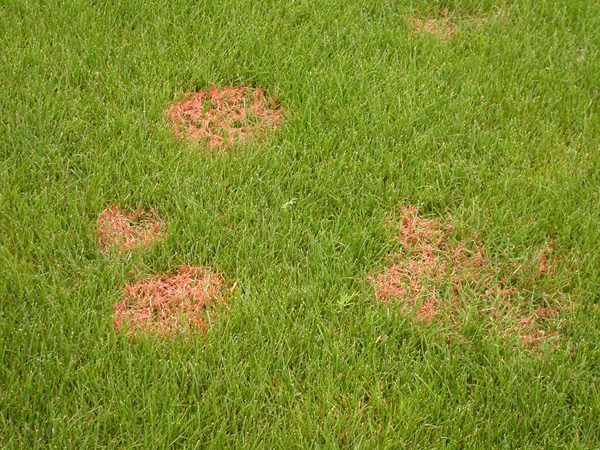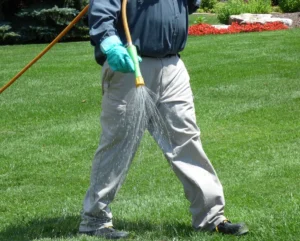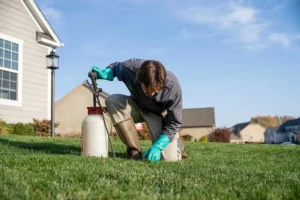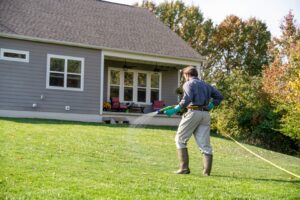Lawn Fungus: What’s going on with my lawn?
As temperatures increase, it is not uncommon for homeowners to experience lawn fungus situations. These funguses, often caused or aided by the combination of heat and rain/humidity, or even by poor soil conditions, can be debilitating.
Two common conditions for lawn fungus are:
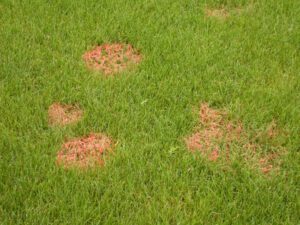 Red Thread, a fungal disease, caused by naturally occurring fungus from the soil, thrives in late Spring and summer, especially on fescue, bluegrass, and ryegrass lawns. Rapid grass growth (sapping nitrogen) brought on by rain or high humidity, combined with mild nighttime temperatures contributes to prevalence.
Red Thread, a fungal disease, caused by naturally occurring fungus from the soil, thrives in late Spring and summer, especially on fescue, bluegrass, and ryegrass lawns. Rapid grass growth (sapping nitrogen) brought on by rain or high humidity, combined with mild nighttime temperatures contributes to prevalence.
The condition initially appears as small browning circles 2-4 inches in diameter, acquiring a pink or red color as red fibers develop in the affected areas. The addition of fertilizer, combined with reduced watering and proper mowing almost always allows this disease to grow out. Extreme cases may require antifungal treatment.
Powdery Mildew infestations on lawns are caused by the presence of fungus in the soil, aided by cooler temperatures, shady conditions (resulting in slower growth and thus overabundance of nitrogen) combined with poor air movement. Powdery Mildew often appears in the early Spring, typically near house walls.
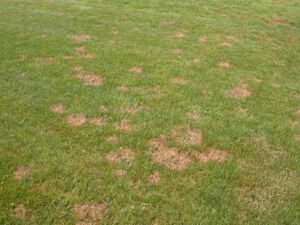 When this condition is present, the grass will appear as though it has been sprinkled with flour. There is little likelihood of lawn damage, but the condition will return again and again and could become severe.
When this condition is present, the grass will appear as though it has been sprinkled with flour. There is little likelihood of lawn damage, but the condition will return again and again and could become severe.
Your technician will apply less fertilizer to these areas, to reduce nitrogen. Mowing less often and watering less often in those areas increases turfgrass resistance, and in severe cases, an antifungal treatment may be needed. Small areas in which powdery mildew appears year after year should be reseeded with a shade mix, or landscaped.

